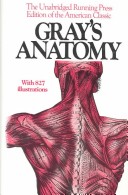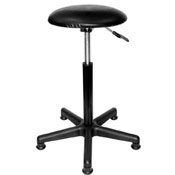My formal training was for illustration. I had never dreamed that 4 years of figure drawing would help me as a photographer who photographs a lot of people. We did study the textbook Gray’s Anatomy for Artists.  The human skeleton is the supporting framework for the attached muscles. Skin and clothing cover muscles, lending shape to the form. Viewers will detect in a minute when something drawn doesn’t “look right” in a drawing of the human body but often cannot identify the “why.” Drawings can be telltale, but cameras aren’t supposed to “lie.”
The human skeleton is the supporting framework for the attached muscles. Skin and clothing cover muscles, lending shape to the form. Viewers will detect in a minute when something drawn doesn’t “look right” in a drawing of the human body but often cannot identify the “why.” Drawings can be telltale, but cameras aren’t supposed to “lie.”
Posing stools vs. chairs
There’s nothing like a great chair as a prop, but what’s all the push for “posing stools” about? Do stools pose themselves?
Simplicity ranks highly in portraiture for the attention on the subject/person. A person may look entirely different seated than standing. Many people are focused elsewhere when posing for you. A person can be more relaxed if seated so you’ll consider sitting them on something as well as different poses. If there is a great disparity in height and you’re photographing two people, it’s a frequent solution to have them both sit so you can photograph them together as a single subject without interference in composition. Stools take up less space than chairs and you can move your subjects closer together if more than one person.
Sitting can force a person to support their weight on their own structure that is the backbone. Remind them to arch their back slightly and not slump.
Chairs
If you’re using a chair, you’ll notice that the thigh area of the leg will rest on more of the seat portion of the chair. This has a tendency to flatten out the thigh against the surface and make it spread wider. It’s never flattering. Even a skinny thigh can appear wide if pressed. Move the model forward some and allow the lower leg to support more of the weight. If the foot is on the floor, the weight distributes to this endpoint. Chairs are normally a fixed distance seat to floor.
Posing Stools
 A posing stool has a smaller surface area in the seat. This naturally helps the model resist the temptation to inadvertently rest thighs on the entire seat or slump into the backrest portion like a chair would have. You’ll still need to observe that the person doesn’t find a way to press those thighs against the seat. The adjustable stools for height are good so the model can rest the sole of the foot on the floor. Adjustable stools will accommodate variances in height. Adjust it for the height of the person. Keep them comfortable. If the knee is much higher than where the join of the leg attaches, you’ll need to adjust the seat height upward. You don’t want a person with knees scrunched up unless it’s obviously intentional.
A posing stool has a smaller surface area in the seat. This naturally helps the model resist the temptation to inadvertently rest thighs on the entire seat or slump into the backrest portion like a chair would have. You’ll still need to observe that the person doesn’t find a way to press those thighs against the seat. The adjustable stools for height are good so the model can rest the sole of the foot on the floor. Adjustable stools will accommodate variances in height. Adjust it for the height of the person. Keep them comfortable. If the knee is much higher than where the join of the leg attaches, you’ll need to adjust the seat height upward. You don’t want a person with knees scrunched up unless it’s obviously intentional.
Help the person in front of your camera. They are reliant on you to communicate what you see and to direct them. They will certainly be happier with the end results if you can mention what you see and how to correct it before the shutter release trips.
Read Full Post »
 The human skeleton is the supporting framework for the attached muscles. Skin and clothing cover muscles, lending shape to the form. Viewers will detect in a minute when something drawn doesn’t “look right” in a drawing of the human body but often cannot identify the “why.” Drawings can be telltale, but cameras aren’t supposed to “lie.”
The human skeleton is the supporting framework for the attached muscles. Skin and clothing cover muscles, lending shape to the form. Viewers will detect in a minute when something drawn doesn’t “look right” in a drawing of the human body but often cannot identify the “why.” Drawings can be telltale, but cameras aren’t supposed to “lie.” A posing stool has a smaller surface area in the seat. This naturally helps the model resist the temptation to inadvertently rest thighs on the entire seat or slump into the backrest portion like a chair would have. You’ll still need to observe that the person doesn’t find a way to press those thighs against the seat. The adjustable stools for height are good so the model can rest the sole of the foot on the floor. Adjustable stools will accommodate variances in height. Adjust it for the height of the person. Keep them comfortable. If the knee is much higher than where the join of the leg attaches, you’ll need to adjust the seat height upward. You don’t want a person with knees scrunched up unless it’s obviously intentional.
A posing stool has a smaller surface area in the seat. This naturally helps the model resist the temptation to inadvertently rest thighs on the entire seat or slump into the backrest portion like a chair would have. You’ll still need to observe that the person doesn’t find a way to press those thighs against the seat. The adjustable stools for height are good so the model can rest the sole of the foot on the floor. Adjustable stools will accommodate variances in height. Adjust it for the height of the person. Keep them comfortable. If the knee is much higher than where the join of the leg attaches, you’ll need to adjust the seat height upward. You don’t want a person with knees scrunched up unless it’s obviously intentional.
